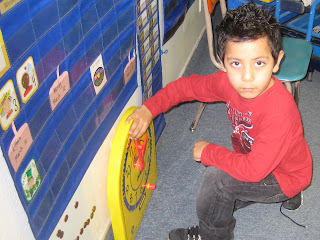If you want to capture the attention of your students, just introduce the theme of space! Kindergarten kids love the mystery and excitement of space and space exploration. As an added bonus, they are willing to work on almost any skill if you give it a space twist. In the past two weeks, Kathleen's class have practiced literacy skills such as blending, segmenting, decoding, naming sight words, reading simple books, and writing. In math they have counted by tens, practiced addition, and solved word problems.
In addition to literacy and math skills, they developed science vocabulary and learned facts about our universe. Through a solar system construct project, the students worked cooperatively to create the sun and planets. Later they followed directions to design astronauts.
Through a unit on space, you can meet the needs of all of your students. You can tailor your activities to support struggling students, help on-level students move up another step, and challenge high students. For ideas and lessons, check out our unit, Out In Space.
And add some alien variety by joining this unit with our Alien unit!




























